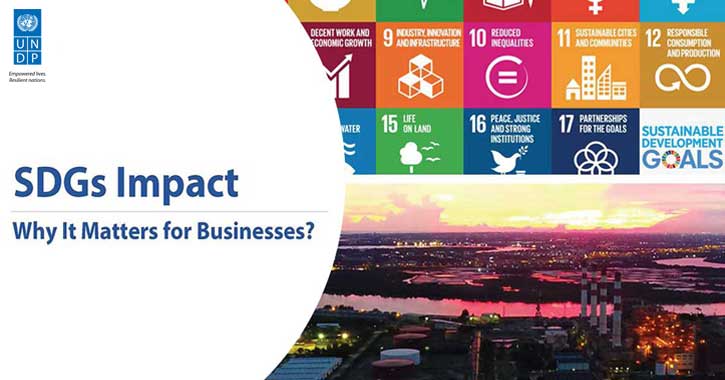- Published Date: 21/12/2018
- by: UNDP
The Next Steps for Social impact investment in Thailand
Knowledge about investment for social enterprise is something that all stakeholders must take into consideration, both organisations that offer Financial Support and those who offer Non-Financial Support, who are middlemen or supporting organisations, to enable all the stakeholders to develop and build ecosystem for sustainability in the right direction.
Initially, we are going to learn the definitions of 2 key words, Social Finance and Impact Investment.
Social Finance: The European Union (EU) defined social finance not only as the continuous action to finance social enterprises or initiatives with social and environmental benefits, but also as the sustainability of financing, and not only the financial instrument, but also the management of demand and supply in the market for social capital (social capital means the new version of capital that not only responds to economic objective or aims to make profit or searches for the most possible benefits, but is the benefit or collective capital that comes from helps and cooperations amongst individuals and various groups in society.
Impact investment: Global Impact Investment Network (GIIN) describes impact investment as investments that are being made into companies, organizations, and funds with the intention to generate social and environmental impact alongside a compelling financial return.
From the lecture “Sharing of findings from the Social Impact Investment Landscape Study” of which the knowledge and experiences were shared by Ms. Haidy Leung, Business Development Manager, and Mr. Sunit Shrestha, management director from ChangeFusion, an organisation that has been working with social entrepreneurs more than ten year and has seen many Social Enterprises: SE grow, so ChangeFusion can collect data and needs from producers that bring resources into use and consumers that have needs for products and services to find the intersections that bring about and break even points and sustainable social context.
Social Finance is an instrument that helps search funds that aim at public good, paves the way for investor to invest in projects that benefit society, or helps communitie to access to new funds. Social Finance can be exercised with many financial instruments such as loan, community bond, social benefit bound, or equity investment. It can help non-profit organisation or charities to be more successful. Social Finance can help manage organisations and charities to access new funds that are ready to support social causes in many aspects. Both social innovation and Social Finance have the same goal, which is to help people, especially the underprivileged, to share success to the communities and society. Social Finances that invested in some social enterprises aim to create jobs and opportunity for those who cannot access labor market.
Survey form ChangeFusion revealed that fund organisations have crucial roles in creating sustainable result, no matter if those organisations offer financial supports in form of Grand, Loan, or Equity Investment. The most important thing is not to consider only sponsorship, but also cooperation to create growth in Long Tail Investment. ChangeFusion also discovered that the most important things for investors are correct and accurate know-how about social enterprise and community developers who motivate the communities. It is counted a 87%. The next important thing is importance in agricultural factors. While the social enterprises pay attention to community developers up to 51%, to distribution of know-how for 39%, and lastly to factors that relate to well-being of all people in society in realms of public health, environment, tourism, energer, and waste management, etc.
However, it was found that 22 from 41 social enterprises still lack know-how about social impact investment, so they cannot assess the work result comparing with wasted resources and time. This is an important challenge for all stakeholders including business sector, government sector, and education sector to map a model to manage know-how that cannot be accessed or show practical investment. As a solution, a central platform that collect all the social impact investment databases was built. It has knowledge about investment factors and methods to assess the work according to SDGs to manage and help social enterprises grow continuously without being left along the way or not having any development.
Besides, one of the important challenges is to express solid needs of business sector in every system of supply chain. Giving clear information of business model will grow understanding between social enterprises and investor companies to find consensus in the models, which will increase growth opportunity for all stakeholders without only being an advertisement or CSR that occurs temporarily, but will be matches of needs and growing together sustainably.





















